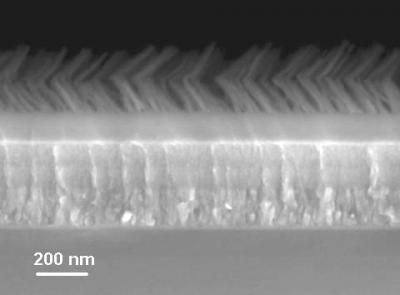NYU physicists find way to explore microscopic systems through holographic video
Physicists at New York University have developed a technique to record three-dimensional movies of microscopic systems, such as biological molecules, through holographic video. The work, which is reported in optics Express, has potential to improve medical diagnostics and drug discovery.
The technique, developed in the laboratory of NYU Physics Professor David Grier, is comprised of two components: making and recording the images of microscopic systems and then analyzing these images.
To generate and record images, the researchers created a holographic microscope, which is based on a conventional light microscope. But instead of relying on an incandescent illuminator, which conventional microscopes employ, the holographic microscope uses a collimated laser beam - a beam consisting of a series of parallel rays of light and similar to a laser pointer.
When an object is placed into path of the microscope's beam, the object scatters some of the beam's light into a complex diffraction pattern. The scattered light overlaps with the original beam to create an interference pattern reminiscent of overlapping ripples in a pool of water. The microscope then magnifies the resulting pattern of light and dark and records it with a conventional digital video recorder (DVR). Each snapshot in the resulting video stream is a hologram of the original object. Unlike a conventional photograph, each holographic snapshot stores information about the three-dimensional structure and composition of the object that created the scattered light field.
The recorded holograms appear as a pattern of concentric light and dark rings. This resulting pattern contains a wealth of information about the material that originally scattered the light - where it was and what it was comprised of.
Analyzing the images provided a different set of challenges. To do so, the researchers based their work on a quantitative theory explaining the pattern of light that objects scatter. The theory, Lorenz-Mie theory, maintains that the way light is scattered can reveal the size and composition of the object that is scattering it.
"We use that theory to analyze the hologram of each object in the snapshots of our video recording," explained Grier, who is part of NYU's Center for Soft Matter Research. "Fitting the theory to the hologram of a sphere reveals the three-dimensional position of the sphere's center with remarkable resolution. It allows us to view particles a micrometer in size and with nanometric precision - that is, it captures their traits to within one billionth of a meter."
"That's a tremendous amount of information to obtain about a micrometer-scale object, particularly when you consider that you get all of that information in each snapshot," Grier added. "It exceeds other existing technology in terms of tracking particles and characterizing their make-up - and the holographic microscope can do both simultaneously."
Because the analysis is computationally intensive, the researchers employ the number-crunching power of the graphical processing unit (GPU) used in high-end computer video cards. Originally intended to provide high-resolution video performance for computer games, these cards possess capabilities ideal for the holographic microscope.
The team has already employed the technique for a range of applications, from research in fundamental statistical physics to analyzing the composition of fat droplets in milk.
More broadly, the technique creates a more sophisticated method to aid in medical diagnostics and drug discovery. At its most basic level, research in these areas seeks to understand whether or not certain molecular components, i.e., the building blocks of pharmaceuticals, stick together.
One approach, called a "bead-based assay," creates micrometer-scale beads whose surfaces have active groups that bind to the target molecule. Because of their small size, the challenge for researchers is to determine if these beads actually stick to the target molecules. The way this is traditionally done is to create yet another molecule - or tag - that binds to the target molecule. This tag molecule, time-consuming and costly to produce, is typically identified by making it fluorescent or radioactive.
The holographic imaging technique, with its magnification and recording capabilities, allows researchers to observe molecular-scale binding without a tag, saving both time and money. Requiring just one microscopic bead to detect one type of molecule, holographic video microscopy promises a previously unattainable level of miniaturization for medical diagnostic tests and creates possibilities for running very large numbers of sensitive medical tests in parallel.





























































